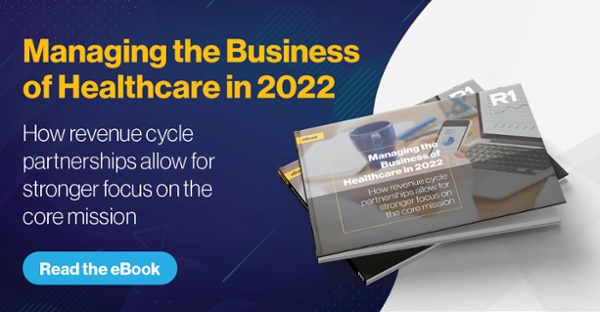There is no doubt that many healthcare systems and practices are in a strenuous financial period. Organizations need to quickly identify opportunities to reduce costs and increase profitability, which is making them seriously consider outsourcing their revenue cycle functions.
Some healthcare providers have been hesitant to work with outside vendors, believing they would have to relinquish control over operations or lose decision-making authority. However, working with a revenue cycle organization is quite the opposite – it is a partnership centered around transparency that is continually looking out for the best interest of the healthcare provider.
An RCM partner can be an extension of your revenue cycle team.
A revenue cycle partner should be viewed as an extension of the practice’s revenue cycle team – a supportive group that optimizes internal workflows to enable a better, more seamless experience for staff members and patients, e.g., allocating more time to focus on delivering quality care, decreasing the amount of errors or delays that typically create frustration with the billing process, etc.
Consider these three enormous advantages an RCM partnership can bring:
1. Revenue cycle specialization to enhance performance
Instead of hiring one or two employees to cover everything from coding to collections, envision having access to a much larger revenue cycle staff that has the expertise, established processes and technology in place to deliver financial results and an improved patient experience.
Revenue partners have specialists who can cover each specific revenue cycle need (coding, value-based care adherence, payer contracting, etc.) and have the skills needed to chase every dollar due. They can also offer technology that creates automated workflows and seamless hand-offs between these digital assets and staff members.
For example, R1’s robust rules engine can analyze claims and auto-correct information as needed to avoid clinical denials. In turn, when complex cases arise or if a denial does occur, workflows are put in place to escalate these items to on-staff specialists to handle since they know how to best appeal to payers.
This workflow that incorporates specialized people, processes and technology saves an incredible amount of time and money while achieving a high level of standardization that reduces common, time-consuming administrative errors
R1 has found that its comprehensive partnership approach to the revenue cycle can net organizations a 10-20% increase in reimbursements.
2. Elasticity to reduce costs
Fixed costs such as salary and benefit expenses are heavy financial loads to carry – especially in the current environment when healthcare providers are facing unprecedented rising operational and labor costs.
With an RCM partnership, there are no fixed costs to manage – providers pay a small fee per patient claim and total RCM costs increase or decrease based on the number of claims filed. This type of variable cost structure protects practices as unexpected changes occur (e.g., increased supply expenses, decreased patient volume, etc.) because the organization does not have to continually incur the high expenses associated with running operations in-house.
Simply put, when volume is down, the fees associated with the RCM partnership decline as well, which helps protect bottom line performance.
3. Scale to enable continual growth
A key strength of an RCM partnership is gaining access to scale. With the help of a partner, and the technology, services and expertise they bring, practices can standardize numerous revenue cycle tasks.
For example, with proprietary technologies such as rules engines and automation, partners can help practices not only identify and correct internal processes, but provide the resources needed to complete work faster.
Additionally, having an experienced team providing consistent support and bench strength is critical especially when an organization is facing unprecedented change or when attention needs to be shifted to more pressing issues. For example, when one R1 client acquired a new practice in 2019, their focus was centered on onboarding their new physicians. By working with a partner who had the capacity to ensure key operations like claims management and patient collections were still operating smoothly as these two organizations came together, the practice could focus on its expansion without compromising day-to-day financial activities and overall patient satisfaction.
It’s clear that revenue cycle partnerships can offer long-term strategic gains for healthcare groups. And while some providers could eventually build out some of this revenue cycle functionality internally, it would require extensive technology investments and valuable time recruiting the right talent.
Right now, healthcare providers need skilled partners who can ensure speed to value – meaning that on day one they can come in and handle all RCM functions effortlessly, achieving results as quickly as possible and giving valuable time back to concentrate on how to best move their business forward.
Download the ebook: Managing the Business of Healthcare: How Revenue Cycle Partnerships Allow for Stronger Focus on the Core Mission





